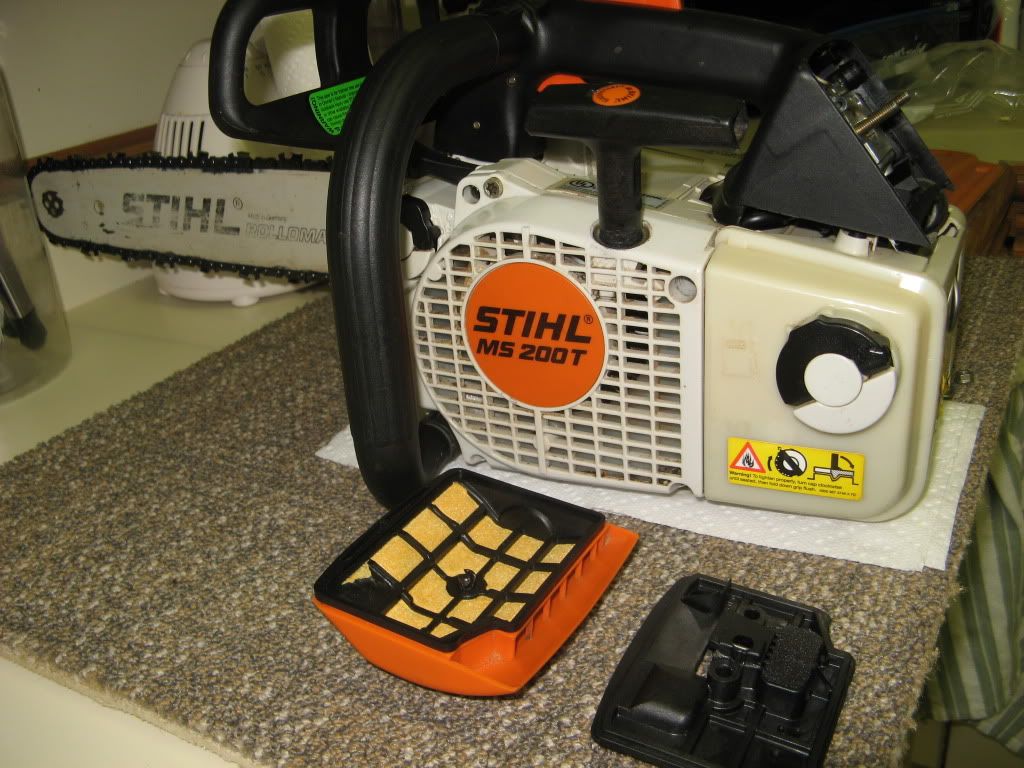Handlogger, how do you know that your carb is bad and that there's not a vacuum leak on the saw?
There are a few reasons why we are investing in the carburetor first,
Lone Wolf:
When we first began having trouble with this particular MS 200T, it could only be rectified by having a super clean air filter installed. This indicated to us that the saw was air-starved (running rich). As I wrote about earlier in this thread, the high-speed (
H) adjustment screw on the factory carburetor -- a Zama C1Q-S61D 434A -- was limited at the factory with a plastic cap, a steel post and a "skirt" that is cast into the body of the carb. This "limiting assembly," as I call it, was cut away to free the H adjustment screw for more adjustability and, although this modification did get the saw to run better, it did not restore proper saw operation.
According to what I've read on the AS.com forum, among others, the Zama
accelerator pump model carbs -- like the S61D we now have -- are notorious for malfunctioning, so, even if our carb is still good, it will give us a major headache eventually. Add this to more than one recommendation
"to swap out what you have for a known good carb," and we thought it wise to get ourselves a reliable carb
without an accelerator pump. The carb we've got on order -- a new Zama C1Q-S16A -- cost us just over $60.00 (shipped), so, when compared to what a replacement carb from the Stihl dealer would've cost us (over $100.00), we decided to invest in a
"known good carb."
Lastly, we don't own the test equipment that's been mentioned in some of the forum posts. If the carb we have on order doesn't end up rectifying our issue, we will begin researching test equipment. At this point, however, it seems logical to try a reliable replacement carburetor.
By the way, it's a long haul for us to get to a Stihl dealer with a certified repair tech, so we do have an interest in becoming self-sufficient when it comes to our Stihl saws.
Hope this clarifies what we're thinking,
HandLogger
























































